Lo Nuevo[hide]
Reportes: From The St... : Cubadisco 2...
Fotos: Tom Ehrlich
Staff: Kristina Lim
Musicos: Juan Formell
Musicos: Yordamis Megret Planes
Musicos: Yasser Morejón Pino
Musicos: José Luis "Changuito" Quintana...
Musicos: Dennis Nicles Cobas
Fotos: Eli Silva
Grupos: Ritmo Oriental : 1988 - Vol. IX - 30 a...
Musicos: Rafael Paseiro Monzón
Musicos: Jiovanni Cofiño Sánchez
Fotos: Tom Ehrlich : 2024 Monterey Jazz, P...
Resenas: Vacilón Santiaguero (Circle 9 ...
Fotos Del Día [hide]
SpanishEnglishEntrevista - Iván "Melón" González -2001
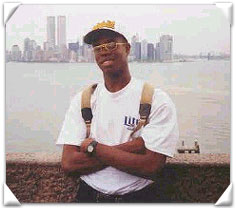
por Kevin Moore - Febrero, 2001
Nota: En 2009 van a salir 4 libros por Kevin Moore sobre el estilo de piano de Melón.
TIMBA.COM: Empezaremos por preguntarte sobre el presente. En el 2000, The Lewis Trio (El Trio Lewis), formado por tu hermano Ricardo, el famoso bajista Alain Pérez y tú, se presentaron con un nuevo disco compacto llamado "Battango" bajo la firma de NubeNegra. Cuéntanos algo sobre el grupo y sobre la grabación del disco.
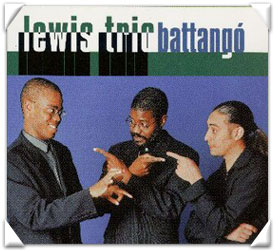 MELÓN: El "LEWIS TRIO" fue una idea que tuvo mi hermano Ricardo hace ya tiempo. Aún yo vivía en Cuba cuando lo fundó. En un principio los componentes del trío eran violín , guitarra y contrabajo. Cuando llegué a España me uní a la formación sustituyendo a la guitarra. Actualmente aunque el grupo conserva el nombre de "LEWIS TRIO", en las presentaciones casi siempre tocamos con una batería incorporada. Indudablemente enriquece la sonoridad. El disco se grabó entre Diciembre de 1999 y Enero de 2000.Este disco tiene una significación especial ya que están incluidos temas que tocan fibras sentimentales profundas como son los casos de "Amanda" y "Notas de la Habana". La primera está dedicada a la hija pequeña de mi hermano y la segunda va dedicada a nuestro padre. Particularmente estos dos temas está teniendo muy buena aceptación en España a nivel de crítica especializada y público.
MELÓN: El "LEWIS TRIO" fue una idea que tuvo mi hermano Ricardo hace ya tiempo. Aún yo vivía en Cuba cuando lo fundó. En un principio los componentes del trío eran violín , guitarra y contrabajo. Cuando llegué a España me uní a la formación sustituyendo a la guitarra. Actualmente aunque el grupo conserva el nombre de "LEWIS TRIO", en las presentaciones casi siempre tocamos con una batería incorporada. Indudablemente enriquece la sonoridad. El disco se grabó entre Diciembre de 1999 y Enero de 2000.Este disco tiene una significación especial ya que están incluidos temas que tocan fibras sentimentales profundas como son los casos de "Amanda" y "Notas de la Habana". La primera está dedicada a la hija pequeña de mi hermano y la segunda va dedicada a nuestro padre. Particularmente estos dos temas está teniendo muy buena aceptación en España a nivel de crítica especializada y público.
TIMBA.COM: ¿Tienen planes para realizar alguna gira? ¿El Trio Lewis toca con frecuencia en España?
MELÓN: El "LEWIS TRIO" hecho dos giras por España y varios programas de T.V. con buenos resultados. En Octubre pasado nos presentamos en Berlín en el Festival Womex. Ahora mismo estamos preparando varias presentaciones de cara a la temporada Primavera-Verano. Esta temporada incluye conciertos en varias ciudades de España y algunas fuera como Alemania, Francia y Sudáfrica.
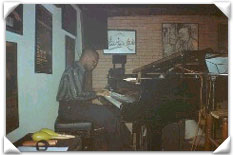 TIMBA.COM: ¿Cuéntanos un poco sobre tu infancia. Qué edad tenias cuando empezaste a tocar el piano? Dónde estudiaste? Alguien mas en tu familia toca algún instrumento? Cómo y cuándo fue que te diste cuenta de que tu futuro era el de ser músico?
TIMBA.COM: ¿Cuéntanos un poco sobre tu infancia. Qué edad tenias cuando empezaste a tocar el piano? Dónde estudiaste? Alguien mas en tu familia toca algún instrumento? Cómo y cuándo fue que te diste cuenta de que tu futuro era el de ser músico?
MELÓN: Tenía 8 años cuando empecé a estudiar piano. Esto sucedió en mi ciudad natal, Pinar del Río y luego continué en la Escuela Nacional de Música en la Habana. En la familia además de mi hermano, mi padre es músico, trompetista concretamente. Ya está retirado y se dedica a dar clases de Solfeo, Armonía y Teoría de la Música. Si mi memoria que por cierto, es bastante mala no me falla, diría que siempre supe que quería ser músico. Está claro que era muy pequeño entonces, pero con 7 años y esto si que lo recuerdo, solía reunir las sillas del comedor frente a mí y sobre un atril colocar un platillo de batería y ponerme a tocar sobre la música de un disco de Maynard Ferguson. Según mi padre hacía bastante ruido y me encantaba utilizar el platillo, pero lo que hacía lo hacía con ritmo. Recuerdo cuando me preguntó si quería estudiar música yo le contesté: "Sí" y el me dijo: "¿que quieres tocar?" yo respondí: "batería". Sucedió que era muy pequeño y no tenía edad para estudiar percusión y es así como empiezo a tocar el piano. Luego me gustó y cuando tuve la edad para la percusión, ya tenía decidido seguir con el piano. También en mi familia hay mas gente dedicada o vinculada con la música. Los dos hijos de mi hermana estudian la trompeta y el hijo mayor de mi hermano, el violín y el piano.
TIMBA.COM: ¿Qué canciones, montunos o grupos provocaron en tí el interés de tocar salsa para el piano?
MELÓN: Desde pequeño escuchaba mucha música en casa. En esa época mi padre tenía una orquesta y yo le acompañaba en muchas ocasiones a sus conciertos. No creo que recuerde algún montuno en especial de aquella época que llamara mi atención. De mi infancia recuerdo a dos músicos que despertaron en mí un gran interés por esta música. Fueron Adalberto Álvarez que entonces era el director del conjunto "Son 14" y Oscar d´León. En las grabaciones Oscar siempre anunciaba las entradas para los solos de piano de un señor al que él llamaba "culebra" y del que nunca aprendí su nombre, pero su forma de tocar el piano me gustaba. Con Adalberto me sucedía algo diferente; me aprendía todos los arreglos de sus temas que entonces eran "A Bayamo en coche", "De Madrugada", etc... y me encantaba toda aquella sonoridad que para mi oído era totalmente nueva. Luego intentaba hacer algo de aquello en el piano pero aún era pequeño y realmente no creo que lo lograra.
TIMBA.COM: En la salsa se ha tocado el montuno arpegiado durante varias décadas, pero en los últimos años, tú y otros han cambiado el concepto de como se toca el montuno. ¿Cuándo fue que te diste cuenta por primera vez que seria posible cambiar el papel que el piano juega de esta manera?
MELÓN: Realmente no existe un momento concreto para cambiar nada y creo que esto es aplicable a otras muchas facetas, no solo la música. Creo que todos somos concientes de que los cambios dependen en gran medida a las circunstancias del momento y de la acción que se realiza. En mi caso me di cuenta perfectamente y desde el principio que la música que estaba haciendo Isaac en aquel momento era buena música cubana pero la forma de tocar el piano que predominaba en general en otras orquestas era incompatible con la música de Isaac; por lo tanto era necesario cambiar la forma de tocar. En este aspecto tengo algo importante que decir. Es cierto que yo tengo una manera diferente de tocar el piano en la salsa pero mi época con Isaac creo que en buena parte ha sido la continuación de un trabajo iniciado por otras personas como Giraldo Piloto, increíble músico y compositor y referente al piano, Antonio "Tony" Pérez, señor pianista y amigo personal al que creo que ya todos conocemos.
TIMBA.COM: En tiempos pasados, los pianistas siempre tocaban el mismo ritmo con cada mano, pero en tus montunos, las dos manos tocan partes completamente diferentes. ¿Cómo se desarrollo este estilo?
MELÓN: Quizás esta forma parezca muy complicada pero en realidad no lo es tanto. La explicación a que los dos manos toquen diferente música está en que básicamente la derecha puede hacer una melodía, luego la izquierda apoya esta melodía doblándola en ciertos momentos, pero a la vez llenando los espacios de tiempo en los que no hay melodía. El relleno se completa con notas del acorde y eso es todo. Quizás explicado así suena muy complicado pero en la práctica no es tanto. Luego durante la duración del montuno vas haciendo diferentes combinaciones y de esta manera haces que el tumbao no sea tan aburrido y monótono.
TIMBA.COM: Si repasamos los últimos 20 años de la música cubana, además de tí, ¿a quiénes consideras tú como los pianistas mas importantes y destacados en el desarrollo de el estilo moderno de tocar el montuno? ¿Quiénes son tus pianistas de timba predilectos? ¿A quiénes admiras por su estilo cuando los escuchas tocar?
MELÓN: Como tu bien dices, si repasamos los últimos 20 años, estoy seguro de que no alcanzarían los números para contar los pianistas que han influido de diversas formas en el desarrollo de esta nueva manera de tocar el montuno. Creo que todos y cada uno de nosotros hemos hecho nuestro aporte a la nueva música cubana, algunos en mayor y otros en menor medida. Para mí destacan 2 nombres, quienes además, han hecho carrera en 2 orquestas que sin duda han revolucionado la música cubana bailable. Estoy hablando de César Pedroso "Pupi" de Los Van Van y Peruchín de N.G. La Banda. Luego me gustan casi todos ya que todos hacen muy profesionalmente su trabajo. Particularmente además de ser buenos amigos, sin duda uno de mis favoritos se llama Tony Pérez.
TIMBA.COM: ¿Cómo fue que desarrollaste estos montunos que ahora tocas? Los escribiste durante algún ensayo o solo mientras practicabas? Qué fue lo que primero te hizo darte cuenta de que un montuno puede ser una composición increíblemente original en vez de ser solamente una fórmula rítmica que se le aplica a una progresión?
MELÓN: Normalmente desde que se ensayaba un tema hasta que quedaba el montuno definitivo pasaba algún tiempo en el cual se iban probando diferentes maneras aunque la idea central se establecía desde el principio. No recuerdo haber escrito ningún montuno. El hecho de que exista una parte en los temas bailables en la que el piano se queda tocando solo, me hizo pensar que ese era un buen momento para que el público se diera cuenta que en la salsa o la timba existen más elementos y que estos pueden llegar a ser muy interesantes. Me alegro de que haya funcionado porque es como una relación de intercambio con la gente: Tú le ofreces al público buena música para bailar y a la vez ese mismo público te premia con el reconocimiento al trabajo que hacen los músicos, no solamente el cantante. Sucede que en ocasiones la gente bailaba y disfrutaba más con el tumbao del piano que el resto el tema. Este proceso provoca que constantemente estés buscando nuevas armonías y formas de hacer un tumbao que sin dejar de ser bailable, a la vez sea novedoso e interesante.
TIMBA.COM: ¿Tocaste en otros grupos de Timba antes de tocar con Isaac?
MELÓN: Empecé a tocar esta música con 17 años en un grupo llamado "Gente Latina", luego estuve tocando bastante tiempo en la orquesta que trabaja en el espectáculo del cabaret "Parisién" del Hotel Nacional en la Habana. Sin duda fue esta una experiencia muy formativa en este género. Más tarde trabajé con un grupo llamado "Algo Nuevo" donde conocí buenos músicos y amigos y finalmente Isaac.
TIMBA.COM; ¿Cómo conseguiste el trabajo tocando con el grupo de Isaac?
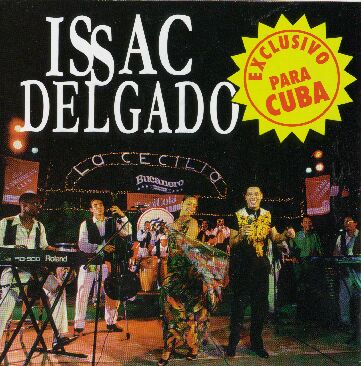 MELÓN: Vive en Cuba, es uno de mis mejores amigos y uno de los mejores saxofonistas y músicos que conozco. Se llama Román Filiú. Entonces él trabajaba con Isaac y me llamó para decirme que necesitaban un pianista porque Tony ya no estaba. Filiú le había hablado de mí a Isaac ya que estudiábamos juntos, así que al día siguiente fuimos al ensayo, nos conocimos Isaac y yo y el resto ya lo conoces.
MELÓN: Vive en Cuba, es uno de mis mejores amigos y uno de los mejores saxofonistas y músicos que conozco. Se llama Román Filiú. Entonces él trabajaba con Isaac y me llamó para decirme que necesitaban un pianista porque Tony ya no estaba. Filiú le había hablado de mí a Isaac ya que estudiábamos juntos, así que al día siguiente fuimos al ensayo, nos conocimos Isaac y yo y el resto ya lo conoces.
TIMBA.COM: ¿Cuánto tiempo llevabas tocando con el grupo de Isaac cuando Alain Pérez se integró, y qué impacto tuvo el sobre el grupo?
MELÓN: Llevaba casi 6 meses cuando llegó Alain. El impacto fue muy positivo desde el principio. Cuando llegó no había tocado baby-bass nunca y en 10 días aprendió a tocarlo. Con el tiempo y trabajando juntos, todos nos dimos cuenta que Alain era y es un gran músico y lo demuestran varios arreglos que hizo para Isaac así como también su forma de tocar el bajo.
TIMBA.COM: Cuanta gente crees que consideran el grupo que Isaac tenia en el 1997 uno de los mejores grupos de Timba que han existido? a nosotros nos ha asombrado, el nivel de alta energía que se refleja en las grabaciones en vivo del "Palacio de la Salsa" que hemos escuchado. Cuéntanos un poco sobre tu experiencia tocando en este grupo? Tienes algunas anécdotas interesantes sobre esa época o esos conciertos?
MELÓN: Precisamente en ese año el grupo alcanzó un nivel bastante alto. Creo que fue un año importante para la agrupación. Estábamos a punto de realizar nuestra primera gira en U.S. y esto sin duda era un paso importante. Así que estuvimos ensayando duro. Hasta donde yo sé hay bastante gente que cree que el grupo en esa época estaba muy bien pero ha pasado el tiempo y ahora hay muy buenos músicos trabajando con Isaac. Experiencias? Hay muchas pero creo que para mí la más importante ha sido darme cuenta que no importa el tipo de música que hagas cuando tu cabeza e ideas están en función de un mismo objetivo: Siempre hacer o intentar hacer buena música, sea cual sea el género.
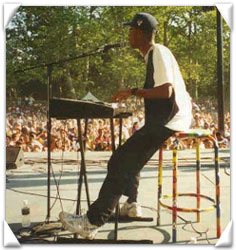 TIMBA.COM: Algunos músicos en Nueva York todavía hablan del concierto que dio el grupo de Isaac en el Parque Central. ¿Qué memorias tienes de esa gira y en particular de ese concierto?
TIMBA.COM: Algunos músicos en Nueva York todavía hablan del concierto que dio el grupo de Isaac en el Parque Central. ¿Qué memorias tienes de esa gira y en particular de ese concierto?
MELÓN: En mi caso particular esta gira ha sido una puerta muy importante que se ha abierto en mi carrera ya que tuve la oportunidad de conocer personas con las que tengo planes profesionales muy importantes. También he vuelto a saber de buenos amigos de los cuales hacía tiempo que no sabía y pude ver un poco más de cerca como funciona el mundo de la música en U.S. Sin duda una experiencia muy enriquecedora. Aquel concierto en Central Park era un reto difícil, sobretodo teniendo en cuentaque era la primera orquesta de salsa proveniente de Cuba que visitaba U.S. Había mucha expectación por parte de la gente como por parte de los músicos; y aquel día como era de esperar fue mucha gente y muchos músicos. Afortunadamente la actuación fue buena y la prueba está en que como dices, aún hoy después de casi 4 años todavía hay músicos que recuerdan ese concierto.
TIMBA.COM: Tú también contribuiste varios brillantes arreglos al grupo de Isaac Delgado como Luz Viajera, Se te fue la Mano y Pa' que te Salves, entre otros. Cuéntanos algo sobre como tu arreglas y compones.
MELÓN: Mis arreglos para salsa no son más que un intento de adaptar la sonoridad de la big-band a un formato más pequeño. Para mí es muy importante la armonía, la cual tomo del jazz y luego combinar estos 2 elementos (sonoridad y armonización) con la gran riqueza rítmica de la música cubana. Está claro que hay muchos más factores que influyen en el estilo de arreglar de un músico pero básicamente estos aspectos son los que más me preocupan a la hora de arreglar. Luego intento que el cantante se sienta cómodo con el arreglo y sobretodo, que lo entienda. Si esto sucede, indiscutiblemente al tema en cuestión se le saca el mejor provecho en todos los sentidos.
TIMBA.COM: A nosotros nos ha fascinado una canción que no se ha grabado llamada "La Temática", con la cual Isaac abre/abrio muchos de sus conciertos. La canción tiene un montuno extraordinario en el piano. Cuéntanos la historia de este montuno, como se arreglo y en particular de ese montuno.
MELÓN: Tengo que ser sincero: No recuerdo en que momento apareció este tema. Sucede que como ya conoces, este era (o es, no lo sé) el tema con que se comenzaban los conciertos lo cual quiere decir que normalmente siempre se toca. Con el resto de los temas no sucede igual ya que a lo mejor haces 1 o 2 temas que quizás no haces en el próximo concierto. Además, este tema era solamente un montuno con varios coros diferentes, la armonía siempre es igual. Me acuerdo que el montuno del piano no apareció desde el principio. Como te dije antes, los montunos definitivos, al menos en la época en que yo estaba, tenían un proceso y el caso de "La Temática" no es la excepción. Particularmente este montuno a mí me gusta mucho.
TIMBA.COM: ¿Cómo te dieron tu apodo? ¿Quién te lo dió y cómo surgió?
MELÓN: La persona que me lo dio se llama Mario Luis, creo que aún vive en Cuba, toca el violín y estudiamos juntos. Me lo puso cuando apenas yo empezaba a estudiar música. Por que? Creo que eso deben preguntárselo a él.
TIMBA.COM: ¿Cuáles son tus planes para el futuro?
MELÓN: Para el presente y para el futuro hacer música, mucha música.
Melón's myspace page - with multiple audio examples















